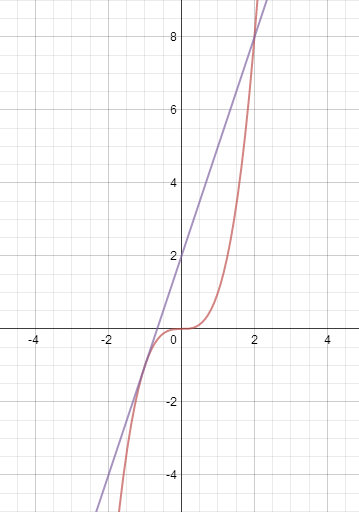Science:Math Exam Resources/Courses/MATH110/April 2011/Question 01 (a)
{{#incat:MER QGQ flag|{{#incat:MER QGH flag|{{#incat:MER QGS flag|}}}}}}
• Q1 (a) • Q1 (b) • Q1 (c) • Q2 (a) • Q2 (b) • Q3 (a) • Q3 (b) • Q3 (c) • Q4 (a) • Q4 (b) • Q4 (c) • Q5 • Q6 • Q7 (a) • Q7 (b) • Q7 (c) • Q8 (a) • Q8 (b) • Q8 (c) • Q8 (d) • Q8 (e) • Q8 (f) • Q9 •
Question 01 (a) |
|---|
|
Determine whether this statement is true. If it is, explain why; if not, give a counterexample. A linear approximation L to a function ƒ satisfies L(x) = f(x) for exactly one value of x. |
|
Make sure you understand the problem fully: What is the question asking you to do? Are there specific conditions or constraints that you should take note of? How will you know if your answer is correct from your work only? Can you rephrase the question in your own words in a way that makes sense to you? |
|
If you are stuck, check the hint below. Consider it for a while. Does it give you a new idea on how to approach the problem? If so, try it! |
Hint |
|---|
|
when the function and the linear approximation intersect. Can a linear approximation and a function intersect in more than one place? |
|
Checking a solution serves two purposes: helping you if, after having used the hint, you still are stuck on the problem; or if you have solved the problem and would like to check your work.
|
Solution |
|---|
|
The statement is false, so a linear approximation to a function may satisfy for more than one value of . To prove this, we need an example of such a function. In particular, we would like to find a function with a tangent line (the linear approxmiation) that intersects the function at another point. One example would be the function , with the linear approximation at the point, say, . Drawing that function and linear approximation looks like this: So we see that both at and at . So the original statement is false.
|
{{#incat:MER CT flag||
}}









